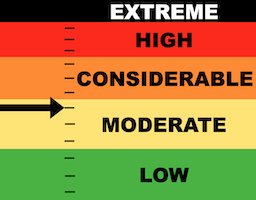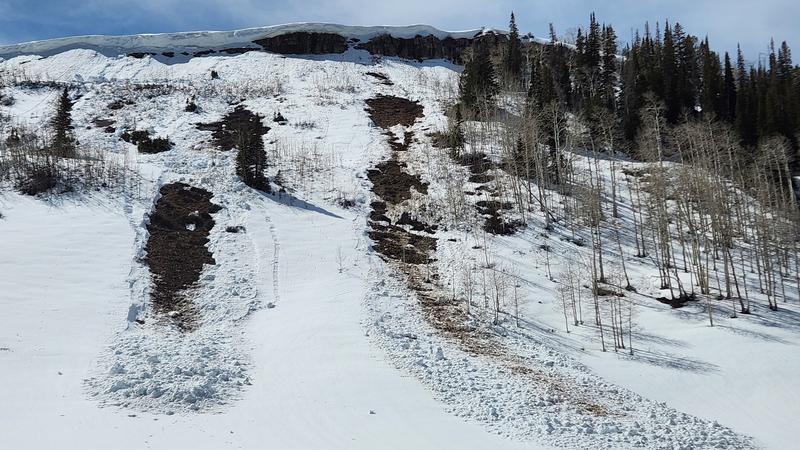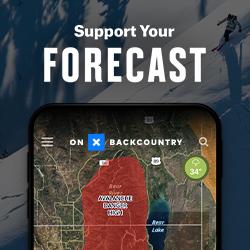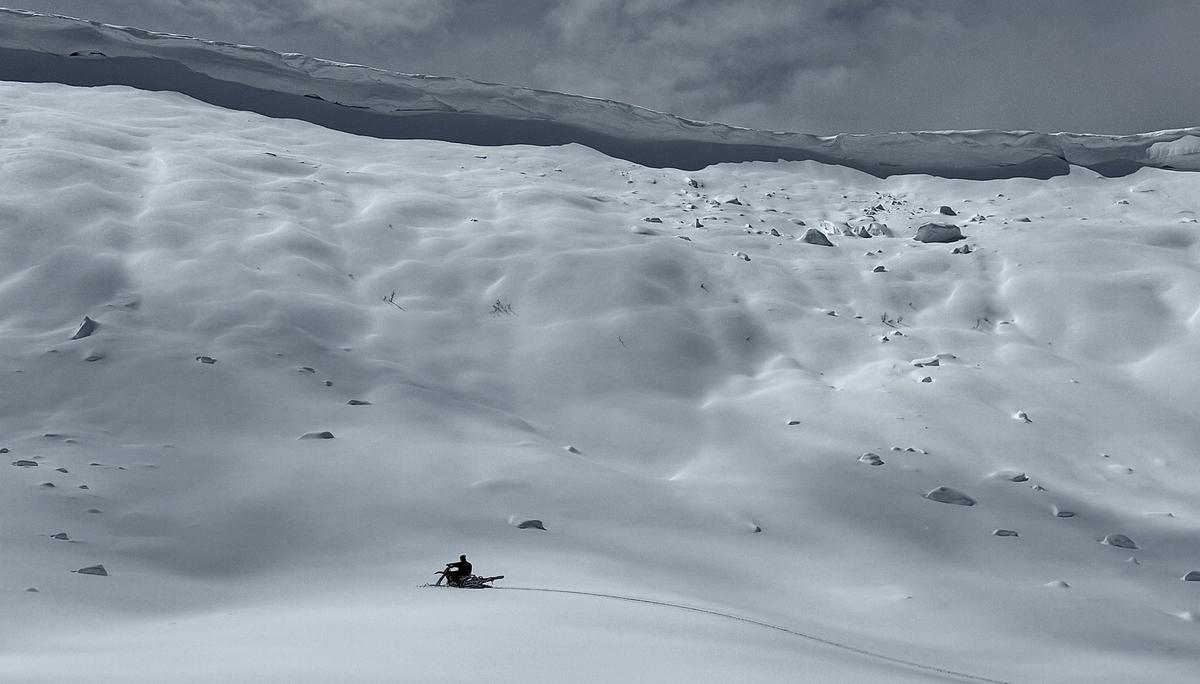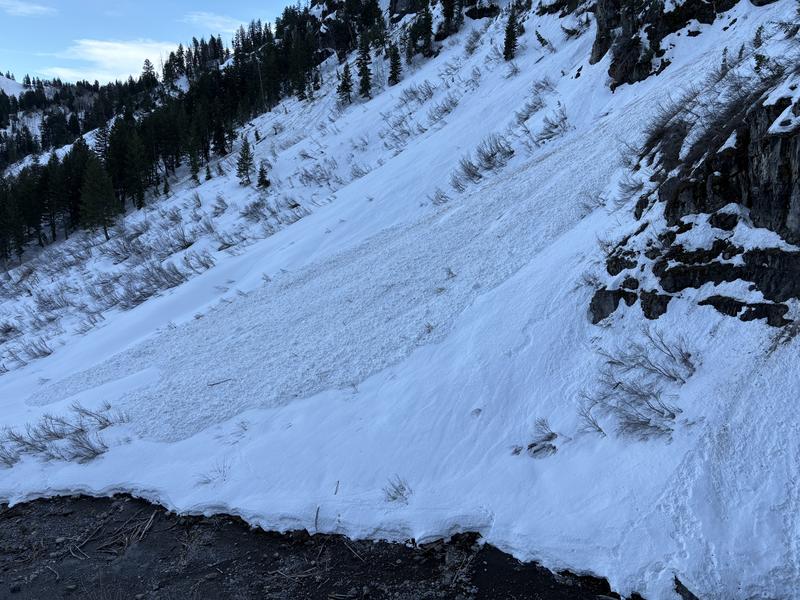Continued warming is also increasing the danger of wet avalanches. Last night was the fifth night in a row with temperatures above freezing. This is a red flag. You will probably find that the snow is becoming unsupportable in the low and mid elevations to the point where you are punching through with your boots and perhaps even with your skis or machines. The wet snow avalanche problem is also simple to manage:
- Avoid being on or below very steep slopes when the snow becomes wet, saturated, sloppy and punchy.
Photo below: example of a pile of debris from a wet loose avalanche
One more thing to add about the warming. At some point we may see the older deeply buried weak layers come to life again as water percolates through the snowpack and lubricates those old layers. The mountains, in essence, will start to shed and we could see wet slab avalanches breaking deep into the snowpack. This is a pretty difficult thing to pin down on if or when it will happen but numerous nights with above freezing temperatures is an indicator. This issue is also easy to manage: Stay off of and out from below steep slopes during the heat of the day.

